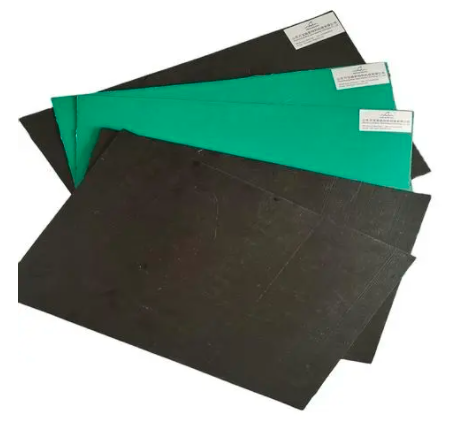- Understanding the Role of Geomembrane Liners in Waste Management
- Innovations in Geomembrane Liners for Water Management
- Geomembrane Liners: A Comprehensive Guide
- The Future of Geomembrane Liners in Civil Engineering
- Geomembrane Liners: Enhancing Landfill Stability
Manager:
WhatsApp:+86 177 0135 2670
Tel:+86 177 0135 2670
Email:marketing@okorder.com
Address:3rd Floor, No.2 Building, No.1 Sanlihe Road
The Secrets behind HDPE Geomembranes Welding: An Art of Precision and Mastery
In the geotechnical engineering world, where water-tightness and impermeability are top priorities, hdpe Geomembranes welding becomes a crucial process. Fusing high-density polyethylene geomembranes is an art form that requires technical knowledge, practical skill and unwavering commitment to quality. This narrative pays homage to the skill involved in HDPE geomembranes welding by focusing on techniques, difficulties and the significance of this process in ensuring that geomembrane installations remain intact.
The Intricate Choreography of HDPE Geomembranes Welding
Welding high density polyethylene (HDPE) geomembranes involves a complex balance between heat, pressure and time. It is a process which turns separate sheets of material into one impervious membrane. Practices differ based on various environments as each environment has its own peculiarities and requirements.

Harvesting Heat in Thermoplastic Welds
Thermoplastic welding methods like hot air and extrusion work have alchemical properties. The method utilizes heat to soften surfaces of geosynthetic membranes which can then be fused together before being allowed to cool resulting into one single homogeneous sheet. Hot-air welding excels at detailed work while extrusion works well for large stronger weld seams.
Advantages of Hot Air Welding
Temperature control allows hot air welding to be used almost anytime under any condition with great precision. In particular it is good for tacking field materials or when working with intricate details. The technique applies heated air over the overlapping areas between two layers of geosynthetic membranes thus bonding them so much that upon cooling they become a single piece again like before.
Extrusion Behemoth
On another level altogether is infact extrusion as it were; through intermingling; uses heated barrels to melt plastic rods before expelling them onto the sheet. This is best applied in HDPE and other similar materials which require durable, continuous joints.
Navigating through Welding Challenges
Field welding brings a variety of challenges such as environmental issues and material preparation. The ambient temperature being too high, presence of moisture and the dirtiness of the seam area could all lead to unsuccessful welding. Thorough cleaning of the geomembrane prior to welding is necessary because any particles of soil or other foreign substances will prevent a good weld from forming.
Welding during Cold Weather
The process becomes more complicated when welding HDPE geomembranes in colder climates. They must overcome the elements often requiring mobile enclosures or warming up the area on which they will weld geomembranes for optimum quality works.
Quality Assurance
The quality of a weld affects directly how well it serves as a barrier against contaminants in geotechnical engineering. Different types of testing both destructive and non-destructive are used to ensure that welds are done properly.
Why Experience Matters?
The importance of this role cannot be overstated when it comes to an effective geomembrane welding project. In fact, installers should have at least five years’ experience installing HDPE liners according to recommendations. The lead fabricator (who may also act as installation supervisor) should have an experience of not less than 100,000m² polyethylene geomembrane welding to assure smoothest progress through each stage.
Documentation and Quality Assurance
Correct documentation is a basic step for the process of welding geomembranes. Before installation, detailed drawings indicating where the liner will be placed and the position of seams are produced. To show any changes,’ as installed’ layout drawings are prepared. This type of documentation enables one to keep track of installation developments in terms of correct recording all welding, patching, anchorage details and sealing around penetrations.
In Conclusion: The Vital Role of HDPE Geomembranes Welding
HDPE geomembranes welding is an important process that ensures efficient and long-lasting geotechnical projects. Through use of trained welders, appropriate methods for joining geomembrane materials and effective testing and documentation processes, we can ensure that integrity in geomembrane installation is maintained. Over time, hdpe geomembrane welding has been a key element in successful environmental as well as construction undertakings among other variables that continue to shape the industry on how they are designed.
This exploration into HDPE Geomembrane Welding highlights the need for accuracy, expertise and quality assurance in order to create watertight seals that can last. As we move forward with our geotechnical works let us not overlook the craftmanship put forth when these critical pieces of our environment infrastructure are welded together. One must never forget about ‘hdpe geomembrane welding’- it is an indicator that reflects hard work of every individual involved aiming at preserving nature while achieving success in their undertakings.
- Previous:A Tribute to 40 mil HDPE Geomembranes: The Enduring Shield
- Next:The Resilient Shield: A Journey through the Life of Polyethylene Geomembrane






